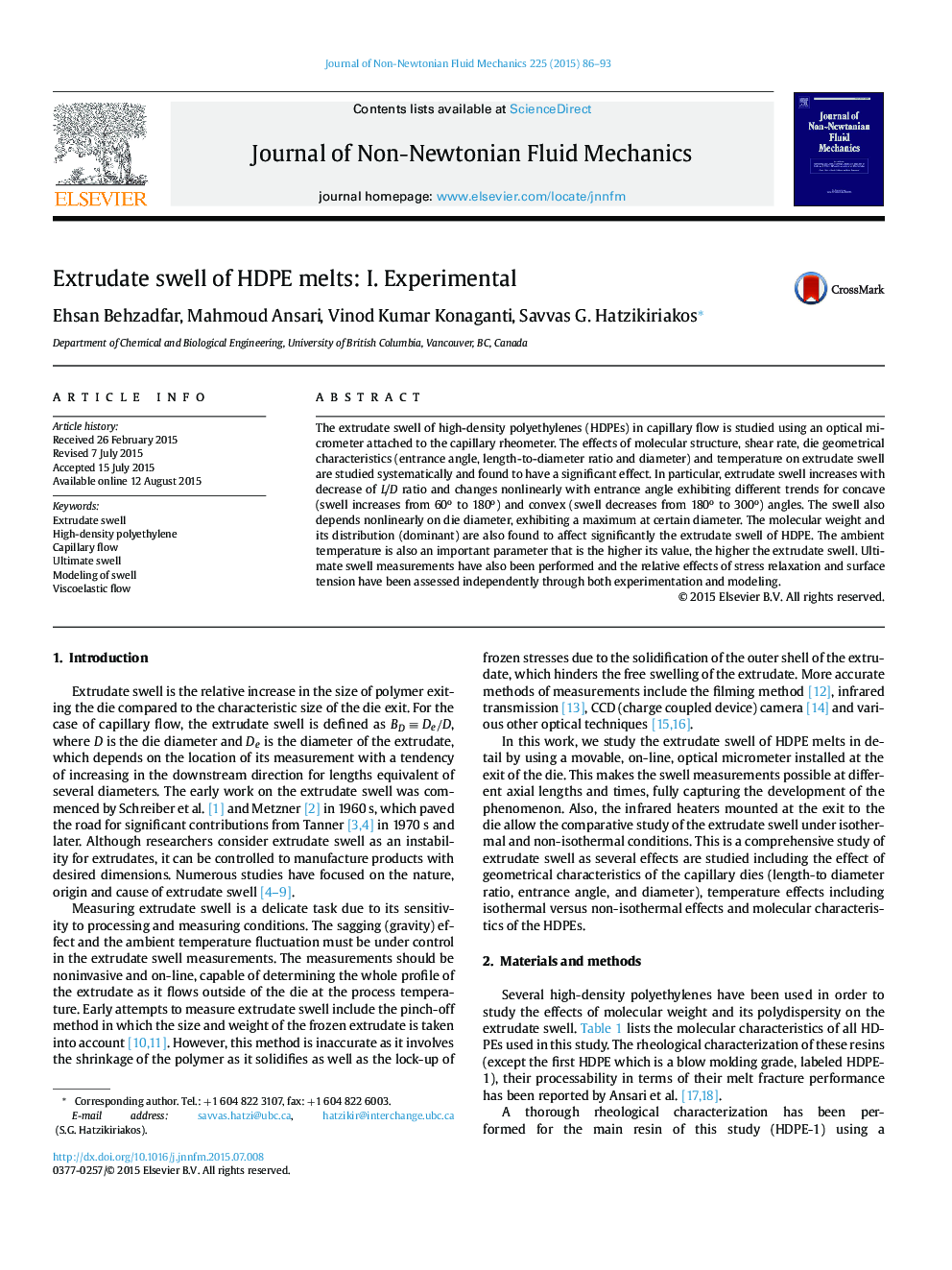| Article ID | Journal | Published Year | Pages | File Type |
|---|---|---|---|---|
| 670439 | Journal of Non-Newtonian Fluid Mechanics | 2015 | 8 Pages |
•Develop a reliable experimental set up to measure the extrudate profile (swell).•Study the effects of geometrical parameters of the die on extrudate swell.•Study the effect of MW and MWD of a series of HDPEs on extrudate swell.•Develop an analytical model to assess the effect of surface tension on ultimate extrudate swell.
The extrudate swell of high-density polyethylenes (HDPEs) in capillary flow is studied using an optical micrometer attached to the capillary rheometer. The effects of molecular structure, shear rate, die geometrical characteristics (entrance angle, length-to-diameter ratio and diameter) and temperature on extrudate swell are studied systematically and found to have a significant effect. In particular, extrudate swell increases with decrease of L/D ratio and changes nonlinearly with entrance angle exhibiting different trends for concave (swell increases from 60o to 180o) and convex (swell decreases from 180o to 300o) angles. The swell also depends nonlinearly on die diameter, exhibiting a maximum at certain diameter. The molecular weight and its distribution (dominant) are also found to affect significantly the extrudate swell of HDPE. The ambient temperature is also an important parameter that is the higher its value, the higher the extrudate swell. Ultimate swell measurements have also been performed and the relative effects of stress relaxation and surface tension have been assessed independently through both experimentation and modeling.
